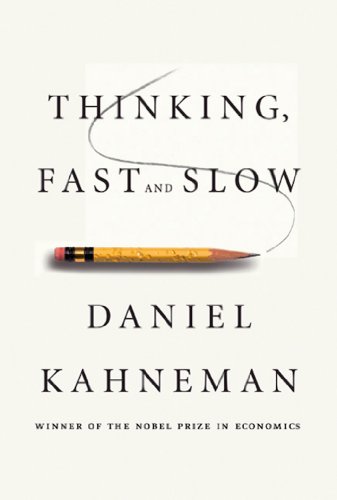

This article is an excerpt from the Shortform summary of "Thinking, Fast and Slow" by Daniel Kahneman. Shortform has the world's best summaries of books you should be reading.
Like this article? Sign up for a free trial here .
What is associative thinking? What is its function, and how might it lead to bias?
Associative thinking is fast, subconscious thinking that associates one concept with another. The ideas can involve memories, emotions, and physical sensations.
We’ll cover how associative thinking works and how you use it in everyday life.
Associative Thinking
Think of your brain as a vast network of ideas connected to each other. These ideas can be concrete or abstract. The ideas can involve memories, emotions, and physical sensations.
When one node in the network is activated, say by seeing a word or image, it automatically activates its surrounding nodes, rippling outward like a pebble thrown in water. This is associative thinking, or the idea of association in psychology.
Associative Thinking Example
As an example, consider the following two words:
“Bananas Vomit”
Suddenly, within a second, reading those two words may have triggered a host of different ideas. You might have pictured yellow fruits; felt a physiological aversion in the pit of your stomach; remembered the last time you vomited; thought about other diseases – all done automatically without your conscious control.
The evocations can be self-reinforcing – a word evokes memories, which evoke emotions, which evoke facial expressions, which evoke other reactions, and which reinforce other ideas. This is the process of associative thinking.
Links between ideas consist of several forms:
- Cause → Effect
- Belonging to the Same Category (lemon → fruit)
- Things to their properties (lemon → yellow, sour)
Associative Thinking is Fast and Subconscious
In the next associative thinking exercise, you’ll be shown three words. Think of a new word that fits with each of the three words in a phrase.
Here are the three words:
cottage Swiss cake
Ready?
A common answer is “cheese.” Cottage cheese, Swiss cheese, and cheesecake. You might have thought of this quickly, without really needing to engage your brain deeply.
The next associative thinking exercise is a little different. You’ll be given two sets of three words. Within seconds, decide which one feels better, without defining the new word:
sleep mail switch
salt deep foam
Ready?
You might have found that the second one felt better. Isn’t that odd? There is a very faint signal from the associative machine of associative thinking that says “these three words seem to connect better than the other three.” This occurred long before you consciously found the word (which is sea).
Associative Thinking with Context
For another associative thinking example, consider the sentence “Ana approached the bank.”
You automatically pictured a lot of things. The bank as a financial institution, Ana walking toward it.
Now let’s add a sentence to the front: “The group canoed down the river. Ana approached the bank.”
This context changes your interpretation automatically. Now you can see how automatic your first reading of the sentence was, and how little you questioned the meaning of the word “bank.”
Associative Thinking Evaluate Surprise
The purpose of associations is to prepare you for events that have become more likely, and to evaluate how surprising the event is.
The more external inputs associate with each other, and the more they associate with your internal mind, the less surprising an event is, the more associative thinking acts by intuition, and the harder it is to detect errors.
Consider this sentence: “how many animals of each kind did Moses take into the ark?”
The correct answer is none – it was Noah who took animals into the ark. But the idea of animals, Moses, and the ark all set up a biblical context that associated together. Moses was not a surprising name in this context.
However, say “how many animals of each kind did Kanye West take into the ark?” and the illusion falls apart. Kanye West is not congruent with the mention of animals and ark, and so the name evokes surprise, thus calling in System 2 to help.
Normative Thinking
Associative thinking maintains a model of your world by determining what is normal and not.
Violations of normality can be detected extremely quickly, within fractions of a second. If you hear someone with an upper-class English accent say, “I have a large tattoo on my rear end,” your brain spikes in activity within 0.2 seconds. This is surprisingly fast, given the large amount of world knowledge that needs to be invoked to recognize the discrepancy (that rich people don’t typically get tattoos).
We also communicate by norms and shared knowledge. When I mention a table, you know it’s a solid object with a level surface and fewer than 25 legs. It’s your System-1 brain that makes this immediate, unconscious association.
(Shortform note: this also explains why many moral arguments are based around semantics. In different communities, people will have different conceptions of what the same word means, like “life” in the abortion debate. The norms are entirely different, but often people don’t realize this.)
———End of Preview———

Like what you just read? Read the rest of the world's best summary of "Thinking, Fast and Slow" at Shortform . Learn the book's critical concepts in 20 minutes or less .
Here's what you'll find in our full Thinking, Fast and Slow summary :
- Why we get easily fooled when we're stressed and preoccupied
- Why we tend to overestimate the likelihood of good things happening (like the lottery)
- How to protect yourself from making bad decisions and from scam artists






